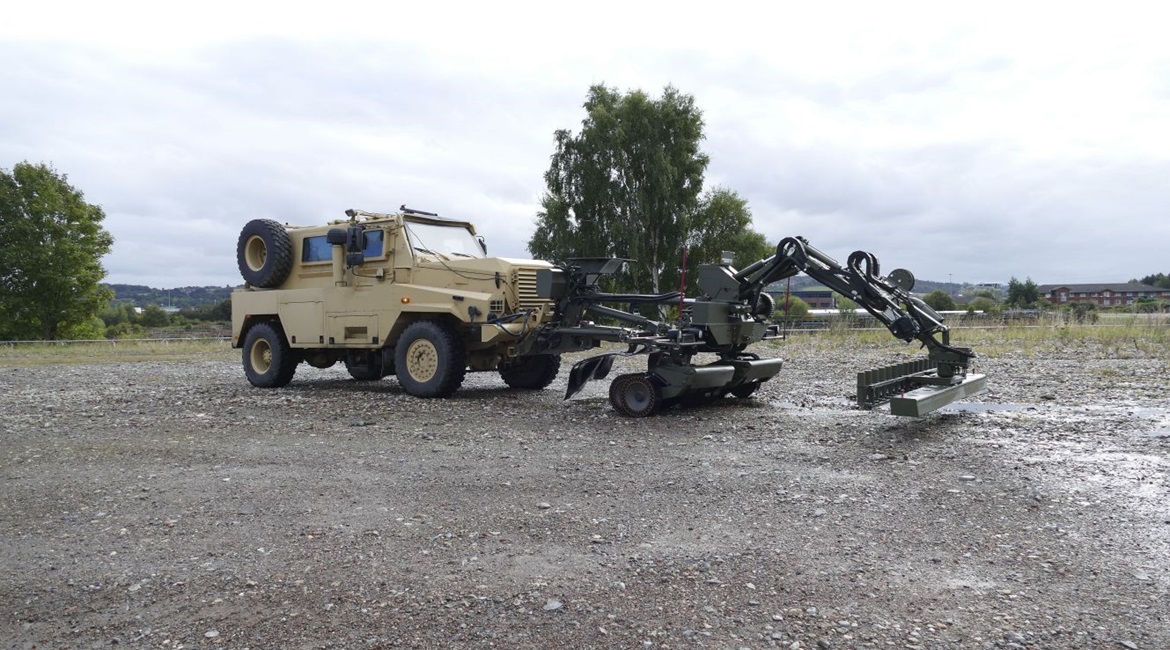
The United Kingdom’s Pearson Engineering has developed a route proving and clearance (RP&C) multi-tool system that it is offering for export.
The company said that its RP&C multi-tool system, which was developed using internal research and development funding, is currently at technology readiness level 6 (TRL 6), meaning that it has been demonstrated in a ‘relevant environment’. The company said that further trials were due later in 2020.
Jason Riby, engineering director at Pearson Engineering, said, “The RP&C multi-tool provides military commanders with a counter-mine and IED [improvised explosive device] route clearance solution without the need for multiple vehicles.” Riby said that the concept “has gathered significant interest amongst the NATO community”.
The system is fitted to the front of a platform, typically a 4x4 or 6x6 mine-resistant ambush-protected (MRAP)-type vehicle, and is designed to facilitate route proving and clearance capabilities that have traditionally been done by at least two platforms. The operator is seated in the MRAP under armour protection.
The RP&C is fitted with elements including, at the very front of the system, ground-penetrating radar (GPR) to detect metallic and non-metallic buried threats. A metal detection (MD) element is to confirm metallic threats and reduce GPR false/positive rates that can slow down operations.

Pearson Engineering’s RP&C multi-tool system attached to the front of the Tempest MRAP. (Pearson Engineering)
Infra-red (IR) and visible-light vision systems provide the operator with visual detection of surface threats, and there is a laser spectrometer for threat confirmation and substance identification from a safe distance.
Looking to read the full article?
Gain unlimited access to Janes news and more...




